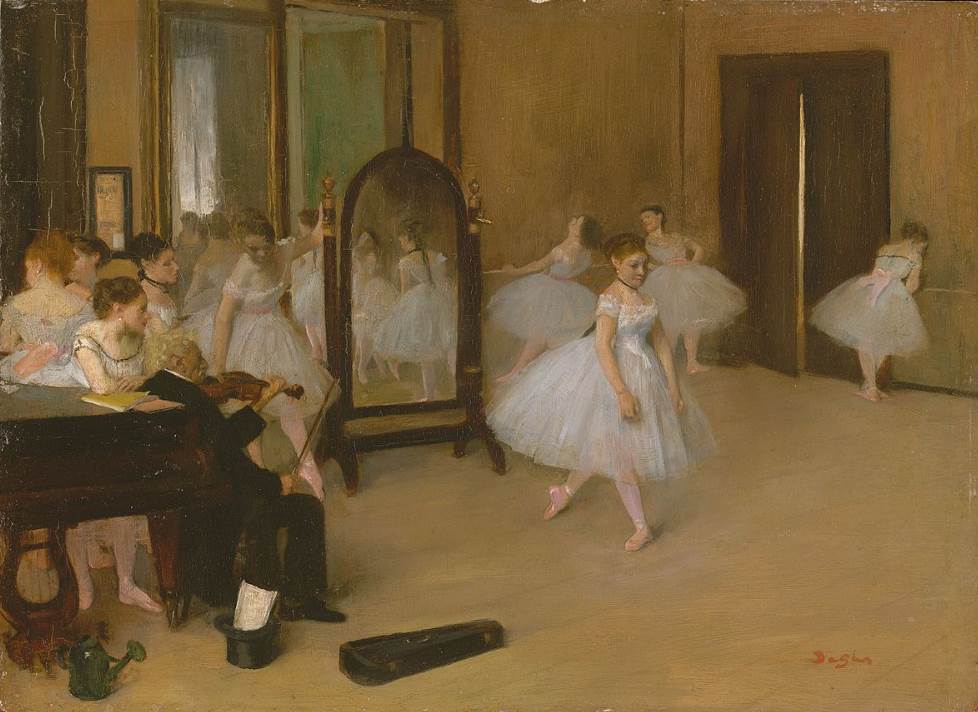Dancers, bathers, jockeys, and portraits. These are the subjects that define the oeuvre of paintings of this renowned French artist.
Edgar Degas (1834-1917) was an Impressionist artist who didn’t really fit into the group. He often belittled and ridiculed the Impressionists for painting outdoors, something he absolutely detested.
Then again, this is how many of the most famous Impressionist paintings were produced. He rejected being referred to as an Impressionist and preferred the be called a Realism artist.
Apart from his oil paintings, of which over half consists of ballet dancers, he was also a master draughtsman, sculptor, and printmaker. His most notable talent in both painting and drawing was capturing movement.
Degas started as a history painter and received a thorough formal education. He later chose to depict scenes from real life and identified himself as a history painter of contemporary scenes.
In this article, you’ll discover some of the most famous paintings by Edgar Degas.
1 L’Absinthe
- Date created: 1875-1876
- Dimensions: 92 × 68 centimeters (36.2 × 26.8 inches)
- Location: Musée d’Orsay, Paris, France
L’Absinthe is a painting by Degas that was originally known as “Dans le Café” or “In the Café.” It depicts a man and woman who are sitting in a café called the Café de la Nouvelle-Athènes in the Place Pigalle in Paris. In front of the woman, we can see a glass of absinthe, a type of strong liquor.
The woman looks to be pretty drunk and the man doesn’t look too great either. That’s the main reason why it was criticized immensely when it was displayed in exhibitions in both Paris and London. Regardless of this negativity, it remains one of the artist’s ultimate masterpieces that displays real life in late-19th century Paris.
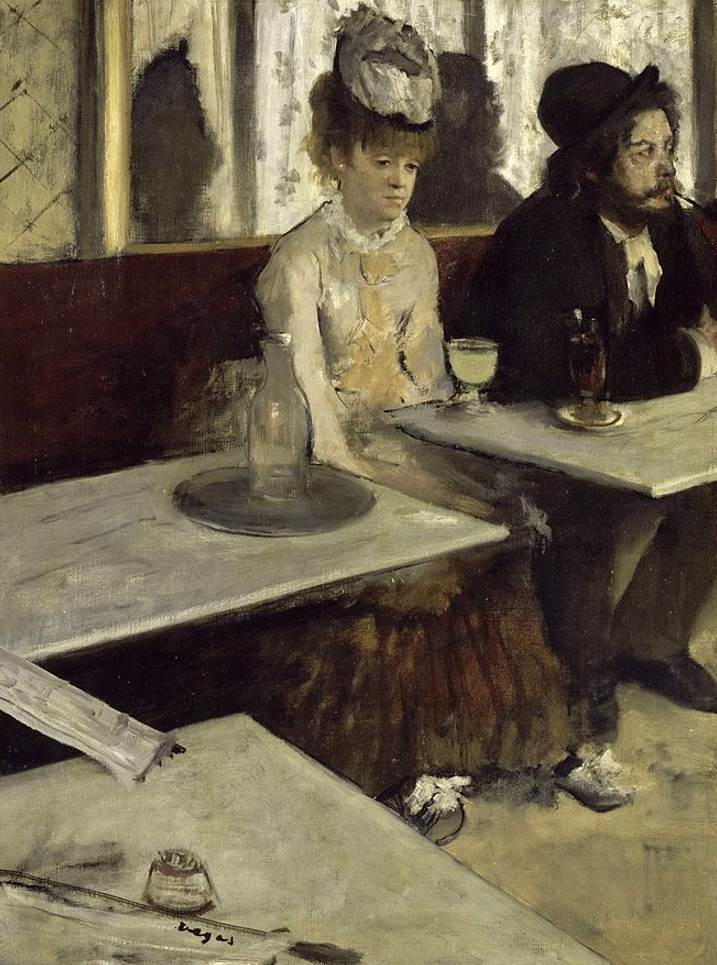
2. The Ballet Class
- Date created: 1871-1874
- Dimensions: 85 x 75 centimeters (33 × 30 inches)
- Location: Musée d’Orsay, Paris, France
The Ballet Class is one of the many paintings by Edgar Degas that revolves around ballet. It depicts an imaginary scene in which several young ballet dancers are being trained by ballet master Jules Perrot (1810-1892). Perrot was a close friend of the French artist.
The painting was commissioned by an opera singer named Jean-Baptiste Faure (1830-1914) who was also an avid art collector. This scene takes place in the “Foyer de la Danse” of the Palais Garnier in Paris. The former opera where Perrot taught burned down a year earlier.
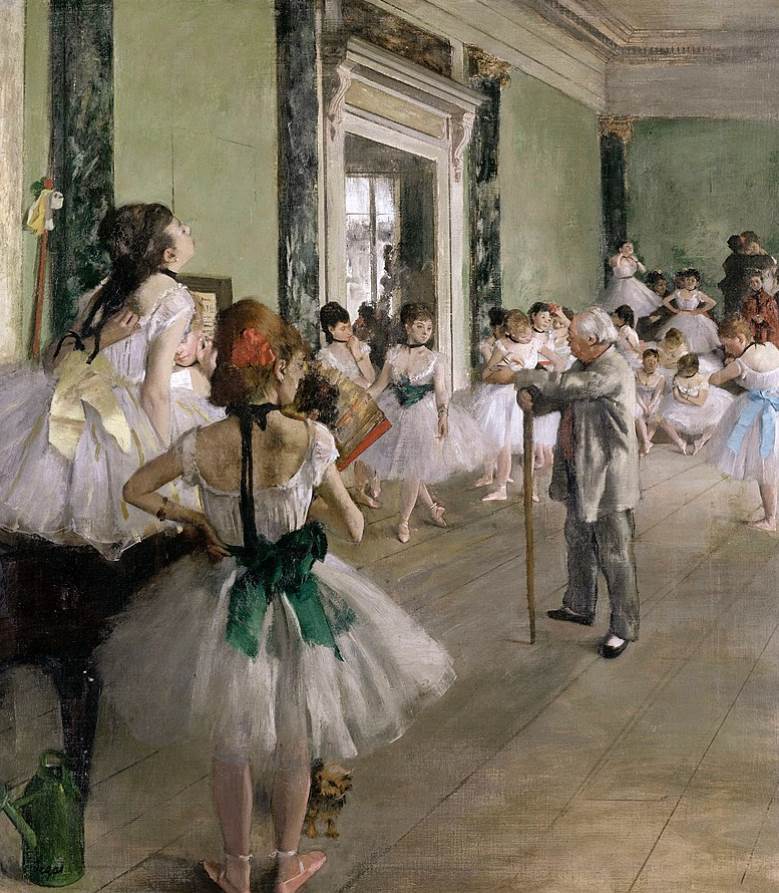
3. A Cotton Office in New Orleans
- Date created: 1873
- Dimensions: 73 × 92 centimeters (29 × 36 inches)
- Location: Musée des beaux-arts de Pau, Pau, France
A Cotton Office in New Orleans is also known as “Interior of an Office of Cotton Buyers in New Orleans.” It depicts the interior of the office of Degas’ uncle Michel Musson who owned a cotton firm in New Orleans in the United States and we can see a lot of business engagements going on.
This is a very remarkable painting in the oeuvre of Edgar Degas because he actually visited New Orleans and stayed there for an extended period in the 1870s. He was the only French Impressionist artist who visited the States and who painted events taking place there. Degas’s brothers René and Achille and Musson’s son-in-law Wiliam Bell are depicted in this work.
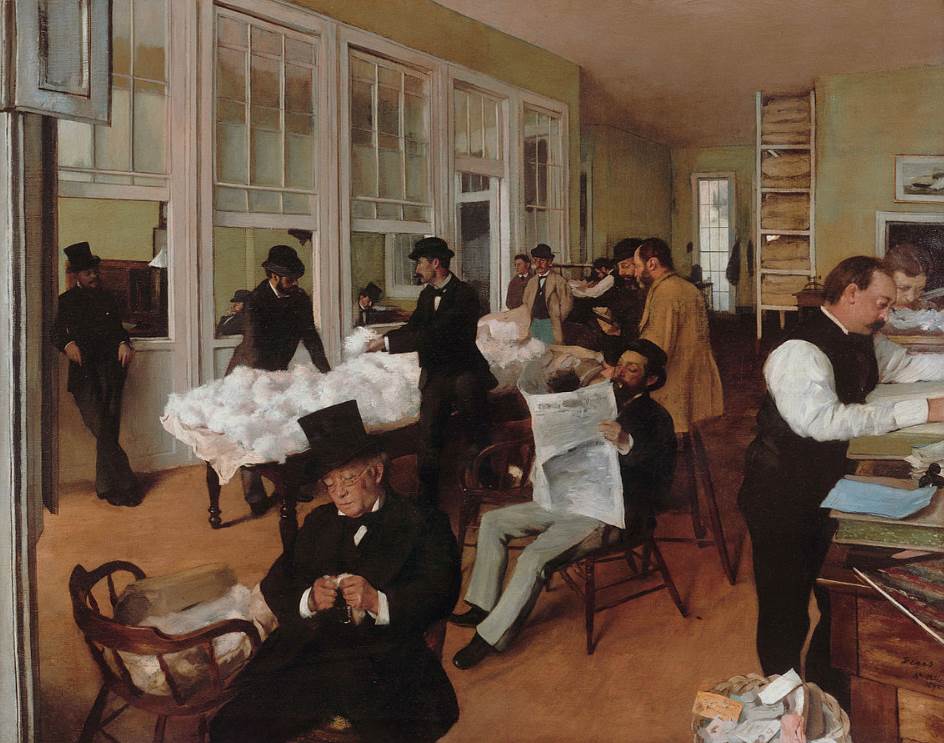
4. The Bellelli Family
- Date created: 1858-1867
- Dimensions: 200 × 253 centimeters (79 × 100 inches)
- Location: Musée d’Orsay, Paris, France
The Bellelli Family is another painting that Degas produced that depicts family members living abroad. It depicts Baron Gennaro Bellelli (1812–1864) and his wife Laura, the aunt of the artist and his father’s sister, together with their two daughters Giulia and Giovanna.
The father of the artist is depicted in the frame behind her and the black clothes she wears are an indication of her mourning as he recently passed away. Bellelli was originally from Naples but was exiled to Florence to stay safe from his political opponents. Degas painted this work while he stayed in Florence but probably added multiple changes later on in his studio in Paris.
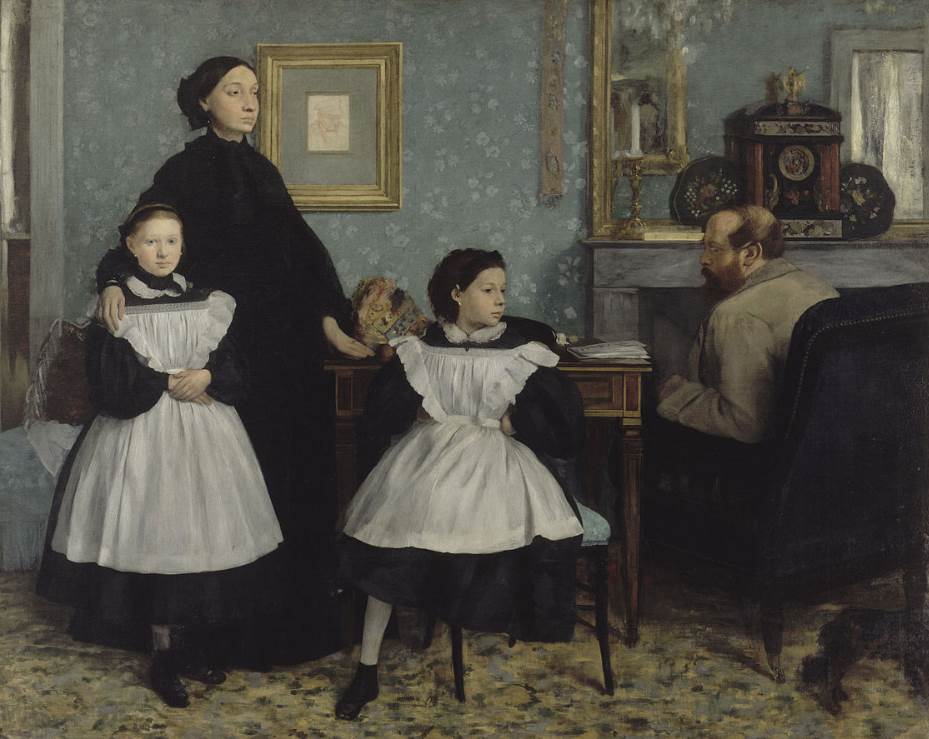
5. Young Spartans Exercising
- Date created: 1860
- Dimensions: 109.5 × 155 centimeters (43.1 × 61 inches)
- Location: National Gallery, London, United Kingdom
Young Spartans Exercising is another painting from the early phase of the artist’s career. It depicts a group of partially nude female and completely nude male Spartans who appear to be challenging each other for a duel. Although it’s hard to judge, there are five girls and five boys in the group.
The mothers of the group of girls and boys are looking on in the distance and the ancient Greek city of Sparta can be seen in the distance. On the left, we can see Mount Taygetus overlooking the city, the place where so-called “unfit children” were tossed down the cliffs.
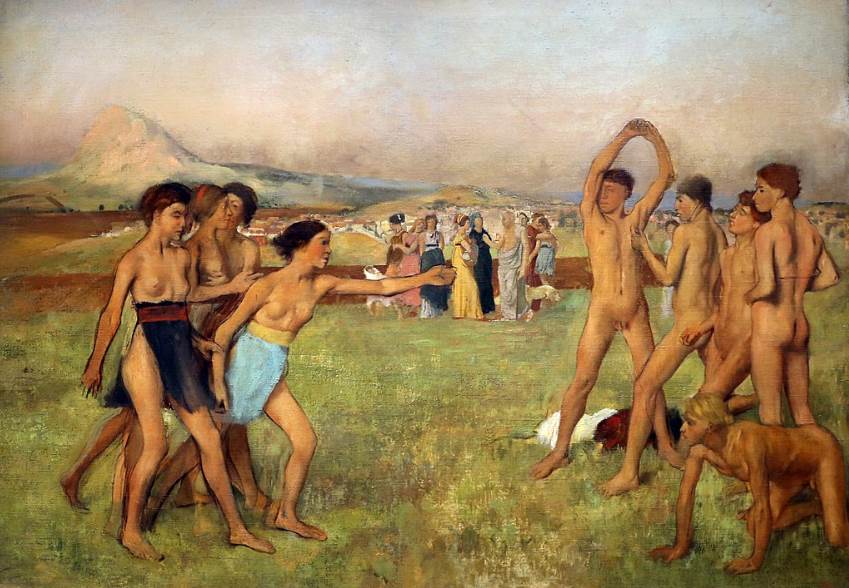
6. Miss La La at the Cirque Fernando
- Date created: 1879
- Dimensions: 117.2 × 77.5 centimetres (46.1 × 30.5 inches)
- Location: National Gallery, London, United Kingdom
Miss La La at the Cirque Fernando is a painting by Degas that was completed in 1879 and was exhibited in the fourth edition of the Impressionist exhibitions. Although paintings depicting scenes of the circus were quite popular at the time, its the only work with this subject that he ever completed.
The painting depicts a black woman nicknamed Miss La La who is performing her famous aerialist moves at the Cirque Fernando in Paris. It’s the only person of color that Degas ever depicted and he didn’t add any stereotypical elements. he did, however, make her skin tone lighter and hid her face which sparked some controversion.
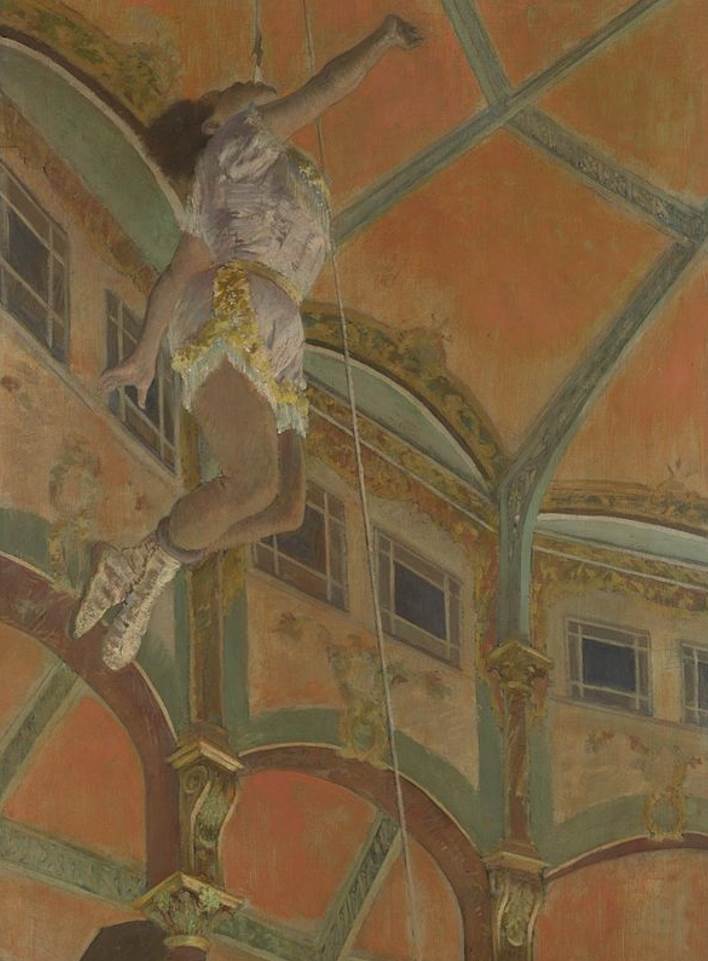
7. Before the Race
- Date created: 1882-1884
- Dimensions: 26.4 × 34.9 centimeters (10.4 × 13.7 inches)
- Location: Walters Art Museum, Baltimore, United States
Before the Race is one of a series of paintings by Degas that depict scenes from horse races. The sport had become popular in France in the 19th century and the artist had always been interested in horses. He admired horses so much that his oeuvre features 45 oil paintings, 20 pastels, and 250 drawings related to horses.
His fascination didn’t stop there because he also produced 17 bronze sculptures featuring horses. This obsession goes back to his visits to friends in Normandy who owned horses. He produced notebooks full of sketches and was keenly interested in the anatomy of these animals.
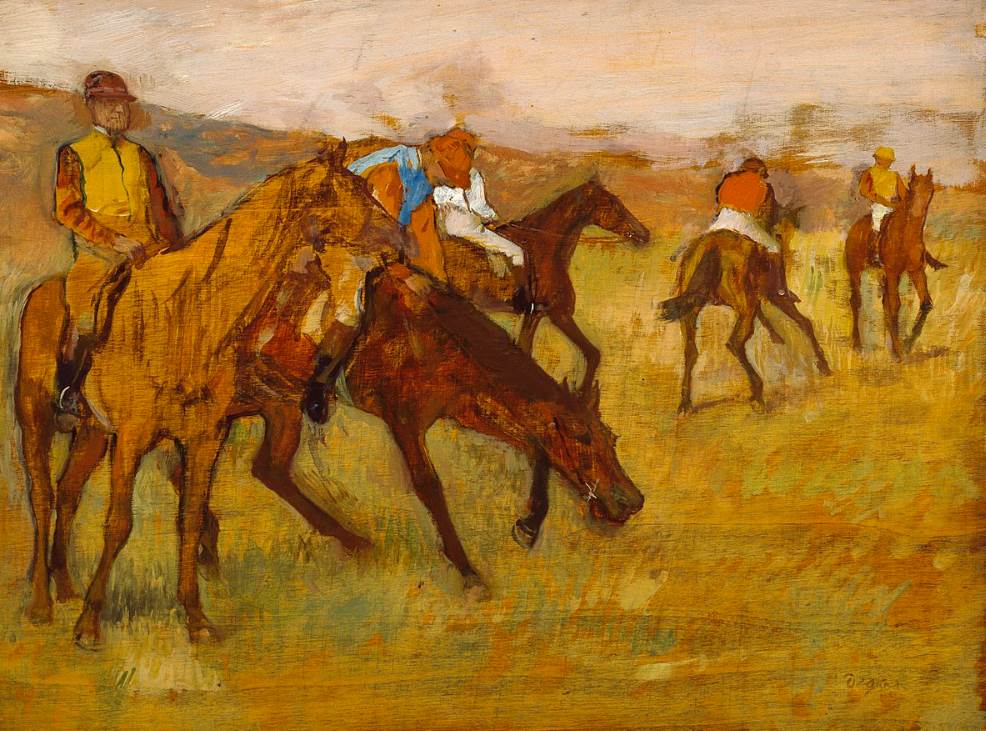
8. Woman in a Tub
- Date created: 1886
- Dimensions: 69.9 x: 69.9 centimeters (27.5 x 27.5 inches)
- Location: Hill-Stead Museum, Farmington, Connecticut, United States
Woman in a Tub is the title of a pastel on blue-grey paper painting that is part of a series of works depicting a similar subject. Other pastels in this series are titled “The Tub” (1886), “Woman Bathing in a Shallow Tub” (1885), and “A Woman in the Tub” (1891).
As these names suggest, they all depict women who are either taking a bath or drying themselves. Some versions also depict the women as they are combing their hair. This series emphasizes the mastery of pastel painting that Degas possessed as he turned everyday private scenes into magnificent works of art.
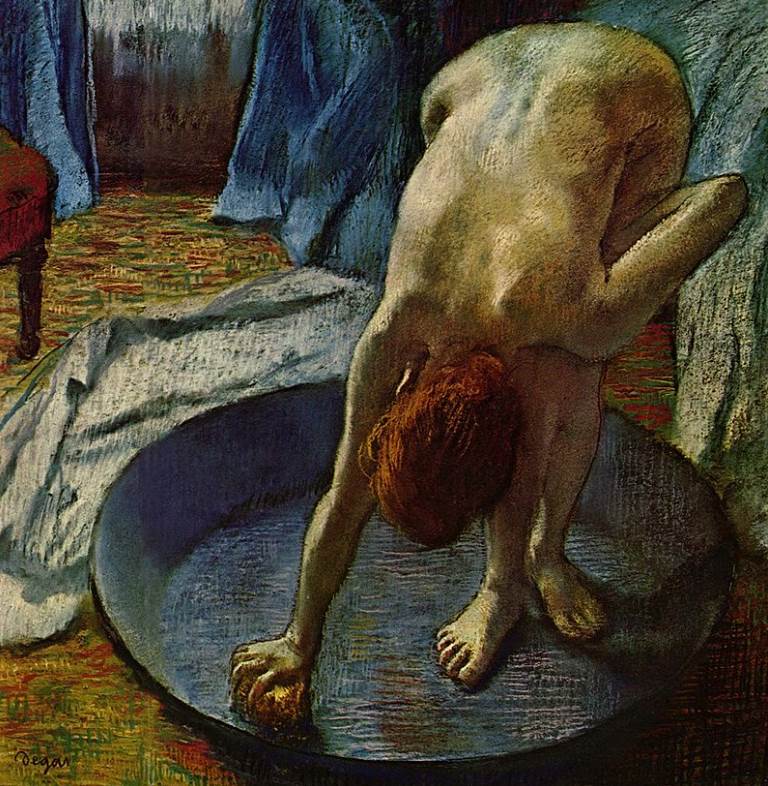
9. Interior
- Date created: 1868-1869
- Dimensions: 81.3 × 114.3 centimeters (32 × 45 inches)
- Location: Philadelphia Museum of Art, Philadelphia, United States
Interior is a rather frightening painting by Edgar Degas that has been described as “one of his most puzzling paintings.” We can see a semi-naked woman who is illuminated by a single lamp and an obscure male figure hiding in the shadows on the right.
Many suggestions have been made as to what the relationship between the man and woman is, but none have been universally agreed upon. Degas referred to it as “Interior” when it was first exhibited in 1905. Despite the theatrical nature of the scene, it remains a mystery to be solved until today.
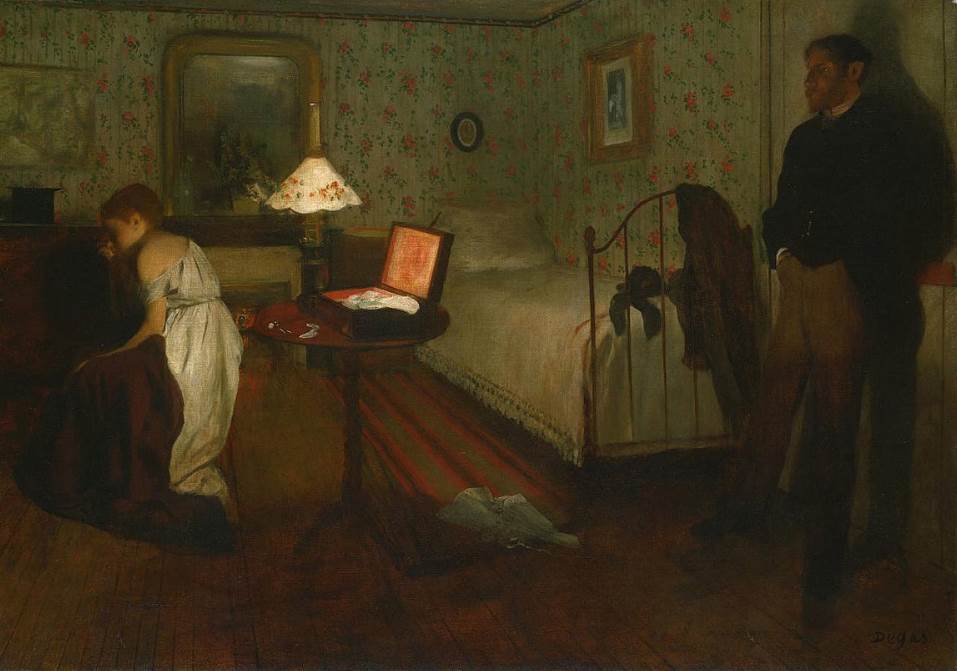
10. The Dancing Class
- Date created: 1870
- Dimensions: 19.7 × 27 centimeters (7.8 × 11 inches)
- Location: MET Museum, New York City, United States
The Dancing Class is another painting that depicts a group of ballerinas while they are practicing at the Paris Opera. Degas was allowed access to the training area of these dancers shortly before the old building had burned down.
The dancer in the middle has been identified as Joséphine Gaujelin, a woman of whom he already painted a portrait in 1867. What’s remarkable about this work is that it was the first painting in the series of dancers. It was followed by dozens of other paintings of the same subject.
